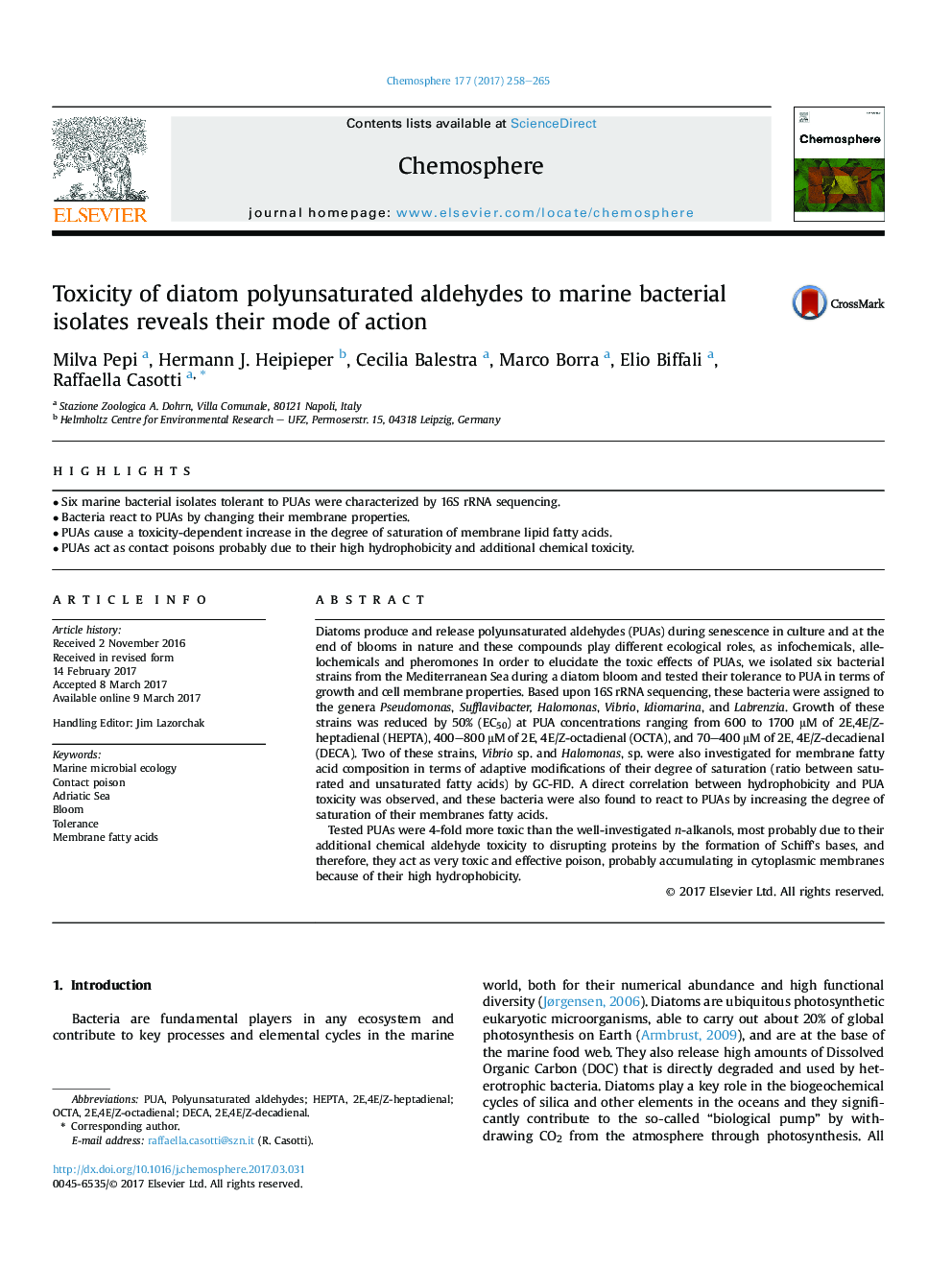| کد مقاله | کد نشریه | سال انتشار | مقاله انگلیسی | نسخه تمام متن |
|---|---|---|---|---|
| 5746284 | 1618794 | 2017 | 8 صفحه PDF | دانلود رایگان |
- Six marine bacterial isolates tolerant to PUAs were characterized by 16S rRNA sequencing.
- Bacteria react to PUAs by changing their membrane properties.
- PUAs cause a toxicity-dependent increase in the degree of saturation of membrane lipid fatty acids.
- PUAs act as contact poisons probably due to their high hydrophobicity and additional chemical toxicity.
Diatoms produce and release polyunsaturated aldehydes (PUAs) during senescence in culture and at the end of blooms in nature and these compounds play different ecological roles, as infochemicals, allelochemicals and pheromones In order to elucidate the toxic effects of PUAs, we isolated six bacterial strains from the Mediterranean Sea during a diatom bloom and tested their tolerance to PUA in terms of growth and cell membrane properties. Based upon 16S rRNA sequencing, these bacteria were assigned to the genera Pseudomonas, Sufflavibacter, Halomonas, Vibrio, Idiomarina, and Labrenzia. Growth of these strains was reduced by 50% (EC50) at PUA concentrations ranging from 600 to 1700 μM of 2E,4E/Z-heptadienal (HEPTA), 400-800 μM of 2E, 4E/Z-octadienal (OCTA), and 70-400 μM of 2E, 4E/Z-decadienal (DECA). Two of these strains, Vibrio sp. and Halomonas, sp. were also investigated for membrane fatty acid composition in terms of adaptive modifications of their degree of saturation (ratio between saturated and unsaturated fatty acids) by GC-FID. A direct correlation between hydrophobicity and PUA toxicity was observed, and these bacteria were also found to react to PUAs by increasing the degree of saturation of their membranes fatty acids.Tested PUAs were 4-fold more toxic than the well-investigated n-alkanols, most probably due to their additional chemical aldehyde toxicity to disrupting proteins by the formation of Schiff's bases, and therefore, they act as very toxic and effective poison, probably accumulating in cytoplasmic membranes because of their high hydrophobicity.
Journal: Chemosphere - Volume 177, June 2017, Pages 258-265
